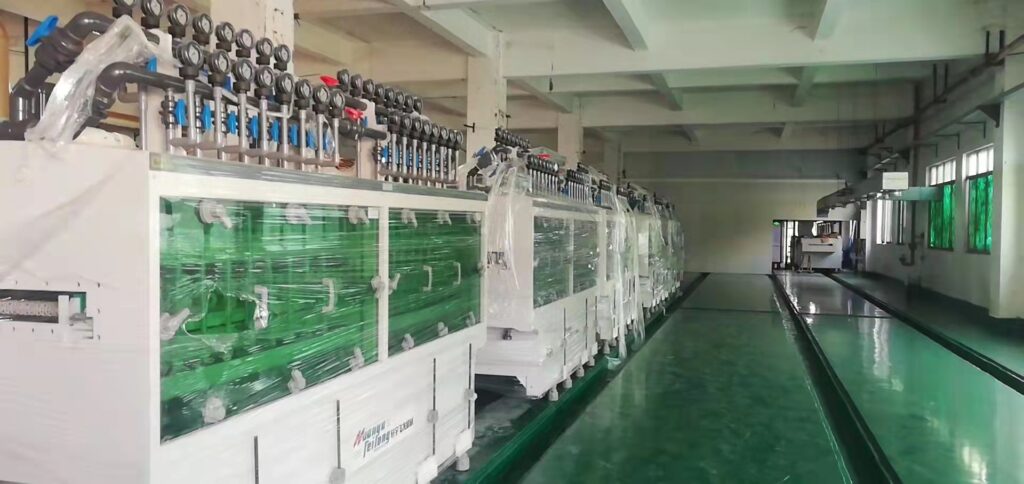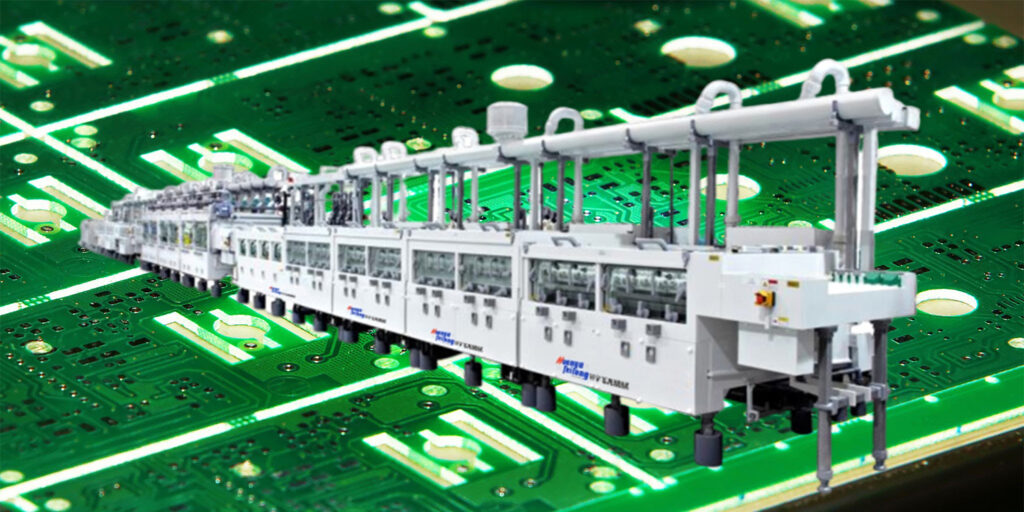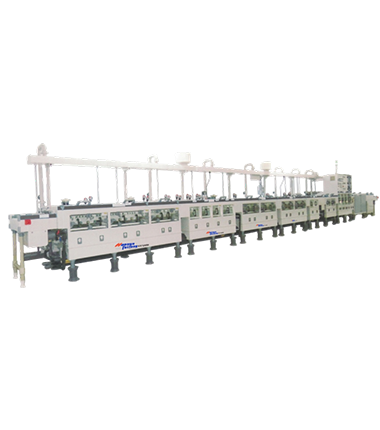
What is the semiconductor wet process?
The semiconductor wet process, also known as wet etching or wet cleaning, refers to a set of techniques used in semiconductor manufacturing to modify or clean the surfaces of semiconductor materials using liquid chemicals. It involves the controlled application of specific chemical solutions onto the surface of a semiconductor wafer to achieve various purposes, such as etching, cleaning, or surface preparation.

Wet etching is primarily used for selective removal of material layers from the surface of a semiconductor wafer. This process involves immersing the wafer into a liquid etchant, such as an acid or a base, that selectively reacts with the target material, dissolving it and leaving the desired pattern or structure intact. Wet etching is commonly used for creating patterns, such as trenches, wells, or isolation regions, in integrated circuits.
How much does t cost to produce PCB
- Design complexity: The more complex the design, with intricate circuitry, smaller trace widths, and finer pitch components, the higher the manufacturing cost. Complex designs may require advanced fabrication techniques or specialized equipment.
- Number of layers: PCBs can have single-layer, double-layer, or multilayer designs. Multilayer PCBs typically have higher manufacturing costs due to the additional layers and increased complexity in fabrication.
- Quantity: PCB manufacturers often offer volume discounts, meaning that producing a higher quantity of PCBs can reduce the cost per unit. However, prototyping or low-volume production may have higher per-unit costs.
- Materials: The choice of materials can impact the cost. High-quality materials or specialized laminates can be more expensive. Additionally, if specific materials are required for specialized applications or high-frequency designs, the cost may increase.
- Manufacturing options: Various manufacturing options, such as surface mount technology (SMT) assembly, through-hole assembly, or specialized processes like gold plating, can affect the cost. Additional processes like solder mask application, silkscreen printing, or panelization can also contribute to the overall cost.

Semiconductor(PCB) wet process equipment
Etching Machine: These machines are used for the chemical etching process to remove unwanted copper from the PCB surface. Spray etching machines, dip tanks, and conveyorized spray etching systems are commonly used for this purpose.
Developing Machine: Developing machines are used during the photoresist imaging process. They apply developer chemicals to remove the unexposed photoresist, revealing the desired circuit pattern.
Stripping Machine: Stripping machines are used to remove the remaining photoresist or solder mask after the etching process. They employ stripping chemicals to dissolve and clean the surface.
Plating Machine: Plating machines are utilized for the electroplating process to deposit a layer of metal, such as copper or gold, onto the PCB. These machines ensure controlled and uniform plating to create circuit traces or enhance conductivity.
Cleaning Machine: Cleaning machines are used for various cleaning steps throughout the PCB manufacturing process. They employ cleaning solutions to remove contaminants, residues, and particles from the PCB surface.
Rinse Machine: Rinse machines are employed to rinse the PCBs after each wet processing step to remove any remaining chemicals or contaminants. They typically use deionized water or other rinsing agents.
Difference between dry process and wet process
The main difference between dry process and wet process lies in the state of the materials or substances involved and the nature of the processes used. Here’s a general overview of the differences:
Dry Process:
- State of Materials: In a dry process, the materials involved are typically in a solid or gaseous state, with little or no involvement of liquid substances.
- Lack of Liquid Media: Dry processes generally do not involve the use of liquid media or solvents.
- Examples of Dry Processes: Dry processes can include techniques like dry etching (such as plasma etching or reactive ion etching), physical vapor deposition (PVD), dry cleaning, or dry surface treatment. These processes often rely on gas-phase reactions or physical mechanisms.
- Advantages: Dry processes can offer precise control, high resolution, and selectivity. They are often faster, more environmentally friendly, and can be more suitable for delicate or sensitive materials that may be affected by liquid exposure.
- Disadvantages: Dry processes may have limitations in terms of uniformity, compatibility with certain materials or substrates, and may require more specialized equipment.
Wet Process:
- State of Materials: Wet processes involve the use of liquid chemicals or solutions as a medium to carry out the desired reactions or treatments.
- Involvement of Liquid Media: Wet processes rely on immersing or applying liquid media to the materials being processed.
- Examples of Wet Processes: Wet processes can include wet etching, wet cleaning, chemical vapor deposition (CVD), electroplating, or wet surface treatment. These processes often involve chemical reactions and interactions between the materials and the liquid media.
- Advantages: Wet processes can offer excellent selectivity, high throughput, and good coverage over large areas. They are commonly used for bulk material removal, cleaning, and deposition of thin films.
- Disadvantages: Wet processes may require careful handling of hazardous chemicals, can introduce contaminants or require additional rinsing steps, and may have limitations in achieving high aspect ratios or sharp features.
Both dry and wet processes have their own advantages and are employed in various industries and applications. The choice between the two depends on factors such as the desired outcome, material compatibility, process requirements, and the specific manufacturing or treatment objectives.
Why wet process is important?
The wet process is important for several reasons, especially in the context of semiconductor manufacturing and other industries that involve precise material modification and cleaning. Some of the key reasons why the wet process is important include:
- Selective Material Removal: Wet etching is a crucial technique for selectively removing specific materials from the surface of semiconductor wafers or other substrates. This allows for the creation of intricate patterns, trenches, and isolation regions required for integrated circuits and microelectronics.
- Precision Surface Cleaning: Wet cleaning is essential for removing impurities, particles, and organic residues from the surface of wafers and other components. Clean surfaces are vital for ensuring the reliability and performance of semiconductor devices and other precision electronics.
- Compatibility with Delicate Materials: Wet processes are often more compatible with delicate or sensitive materials, as they do not subject the materials to high temperatures or harsh mechanical forces like some dry processes might. This is especially crucial in semiconductor manufacturing, where certain materials can be damaged or altered by dry processes.
- High Throughput: Wet processes can achieve high throughput, making them suitable for large-scale production in semiconductor fabrication facilities or other industries requiring mass production.
- Contamination Control: Wet processes can be designed to minimize contamination issues by using carefully controlled chemicals and rinsing steps, ensuring the purity of the final product.
- Low Cost: In some cases, wet processes can be more cost-effective than dry processes, especially when dealing with high-volume production.
- Uniformity: Wet processes can provide uniform deposition, etching, or cleaning over large areas, making them suitable for applications requiring consistent results across a substrate.
- Customization: The wet process can be tailored to specific requirements by adjusting chemical concentrations, process times, and temperature, enabling a wide range of applications and desired outcomes.
Due to these advantages, the wet process remains an integral part of semiconductor manufacturing, microelectronics, photovoltaic cell production, and various other industries requiring precise material modification and cleaning. While dry processes offer their own benefits, wet processes play a vital role in achieving the required levels of precision, uniformity, and compatibility with a diverse range of materials and applications.




